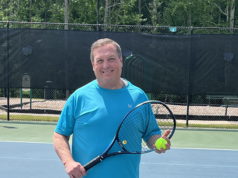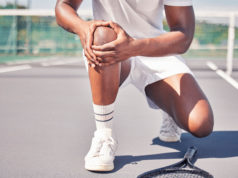By Mark Kovacs, Ph.D., CTPS, MTPS
Tennis is a great sport for fitness and health. However, to play at a competitive level, you can do a lot of things outside of the tennis court to help you get fit. Many options exist based on the level of player, their fitness level, their goals, and the time that the athlete is willing to put into his or her tennis game.
So, what is the right setup? Let’s use our understanding of physiology and fatigue to help establish a training plan. This information has come directly from the International Tennis Performance Association (iTPA) Certified Tennis Performance Specialist program. It is important to incorporate these seven areas appropriately throughout the week. Each athlete will prioritize certain areas, but in all good programs for tennis, these seven areas should be based on the objectives and needs of the athlete.
Area 1: DYNAMIC WARM-UP
To prepare muscles for rigorous activity, increase range of motion, activate muscles, stimulate the nervous system, and mentally prepare for competition. Consider beginning by working on tissue quality (foam rolling) and then slowly add low-impact movements to elevate your heart rate. Gradually increase range of motion through dynamic exercises. Activate key muscle groups for tennis and finally “fire up” the nervous system by completing short, tennis-specific movements.
Area 2: SPEED & AGILITY
To improve acceleration, deceleration, and the ability to perceive, react, and change direction with efficiency. Training can range from focus on quality of on-court movement to high-intensity, maximum-effort movement drills. Speed and agility are heavily dependent on strength, power, and mobility. Note: Rest a minimum of 60 seconds between exercises/drills to ensure adequate recovery. This is different from tennis-specific endurance training, where your rest periods will be shorter.
Area 3: POWER & EXPLOSIVENESS
To generate muscular force with upper & lower body more quickly (Power = the ability to produce force quickly). Examples include medicine ball exercises, plyometrics, and/or supervised high-velocity weighted movements.
Area 4: TENNIS PRACTICE
When practicing, focus on playing at a slightly higher intensity during drills (than matches) and reduce the rest time in practice (compared to the matches).
Area 5: STRENGTH
To create balanced strength so your body can handle demands on court and off and avoid injury. Focus on good technique and higher reps, lower sets and progressions:
- Lower body
- Upper body (1:2-1:3 ratio of push to pull ratio exercises)
- Core training
Area 6: TENNIS-SPECIFIC ENDURANCE
To help you sustain energy longer and recover faster between points. Many exercises for “speed & agility” and power & strength also work for endurance training, with two key differences: (1) focus on maintaining quality movement even when fatiguing: (2) use shorter rest periods between sets (usually no more than 20-30 seconds) to simulate on-court demands. Consider 1:2 – 1:4 work to rest ratios.
Area 7: FLEXIBILITY & MOBILITY
To improve performance, alleviate pain, and lower injury risk. Important for general health and wellbeing and to address areas with typically reduced range of motion in tennis, including ankles, hips, and shoulder. Look to also use other recovery methods such as foam rolling, electrical blood flow stimulation, and compression-based therapy to help during the important process of getting ready for practice and competition.




